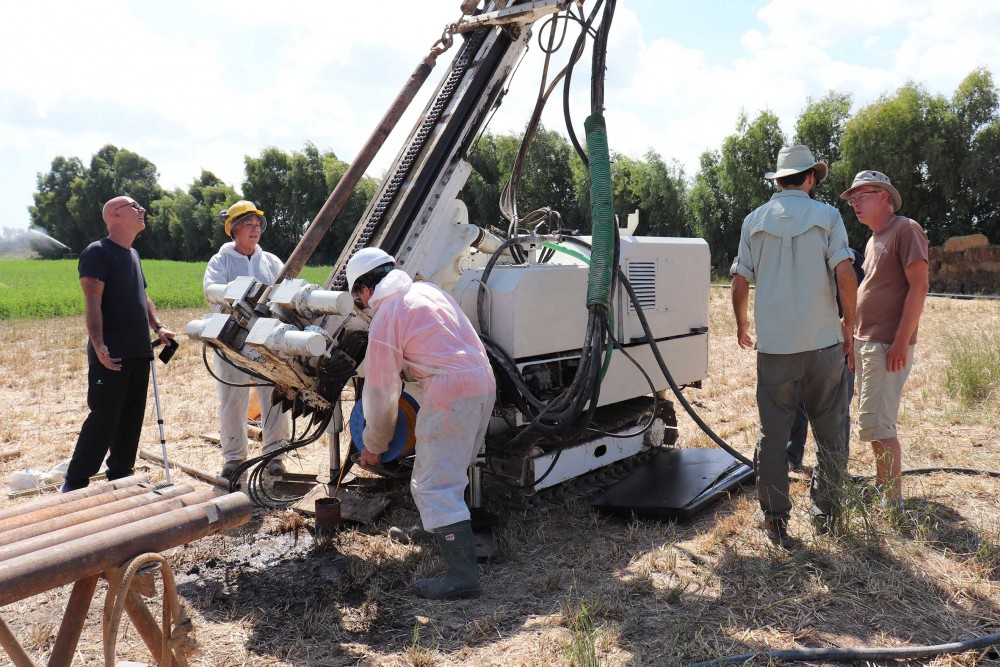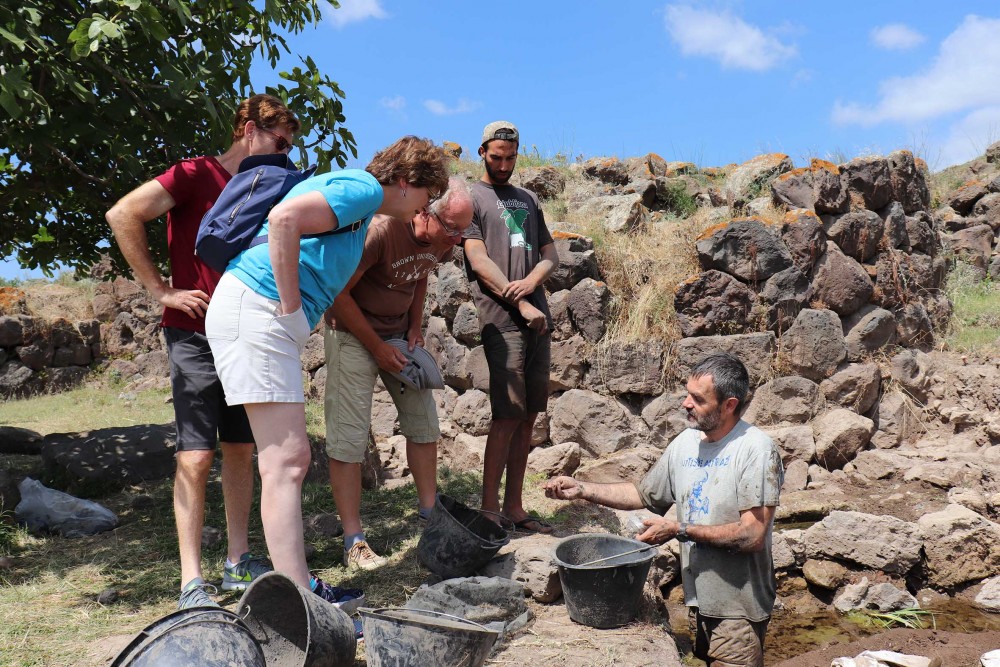
The team of scientists, led by Director of the Joukowsky Institute for Archaeology and the Ancient World Peter van Dommelen and Professors of Earth, Environmental, and Planetary Sciences James Russell and Timothy Herbert, are on a quest to probe the complex intersections of history, climate, and human action by combining their respective expertise in archaeological analysis and paleoclimate science.
As the team explains, Sardinia's position in the Mediterranean makes it uniquely suited to examine a lengthy and detailed record of human land use unparalleled anywhere else in the world—all in a region where globally important, precipitation-controlling ocean currents converge.
The team recently completed the first leg of the project, which included drilling a sediment core from a now-drained lagoon called Mar' ‘e Foghe in western Sardinia. By analyzing the core, which is thought to span the full Holocene epoch, the team hopes to detect landscape, vegetation, and climate changes over the past ten millennia, and to determine the character and extent of the human impact on the environment.

During the drilling, University President Christina Paxson visited the main excavation site at S'Urachi, where van Dommelen and others from the archeological team spoke with her about the new work, its importance for the Institute, and the large role graduate students have been playing in its undertaking.
The team's next steps include archaeological fieldwork at a nearby site, which will help contextualize the recently-drilled sediment core, as well as analysis of existing, nearby marine sediment cores. This latter work will enable the team to reconstruct sea surface temperature changes over the last 10,000 years and compare this data to that gleaned from the new, land-based sediment core.
"Both human activities and climatic change have had strong impacts on Mediterranean vegetation and landscape development over thousands of years," the team writes in a proposal of the work. "By combining these intersecting data sets, we are confident to be able to realize our overarching goal to develop new records of climate, vegetation change, and human land use throughout the Holocene in the West Mediterranean."
If successful, the team plans to co-teach a graduate seminar on Mediterranean Environments, Climate, and Land Use that is built around the project.
The team's project, Climate and Vegetation Changes in the Holocene West Mediterranean, is supported by IBES seed funding.